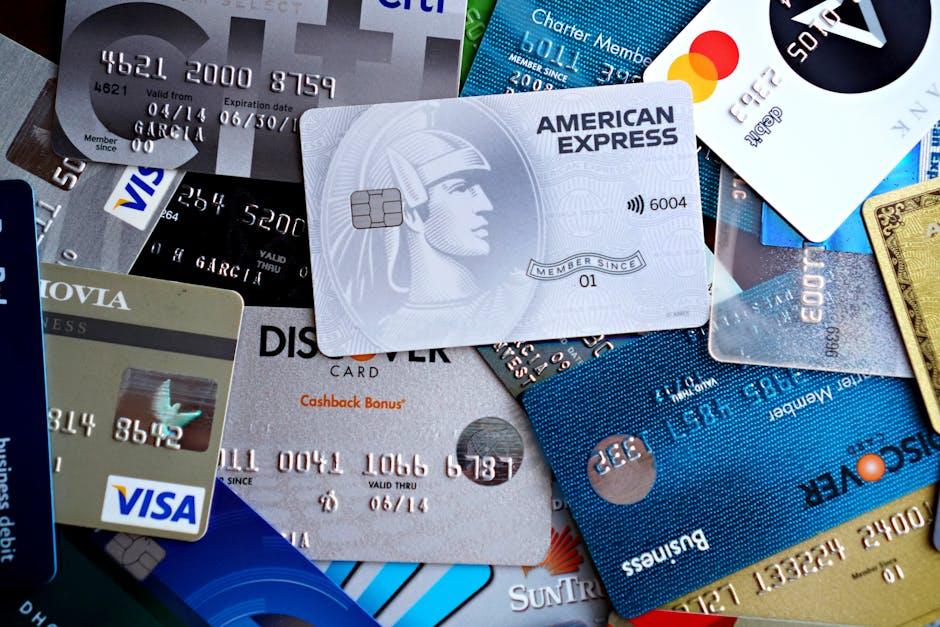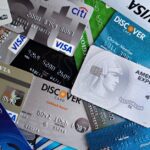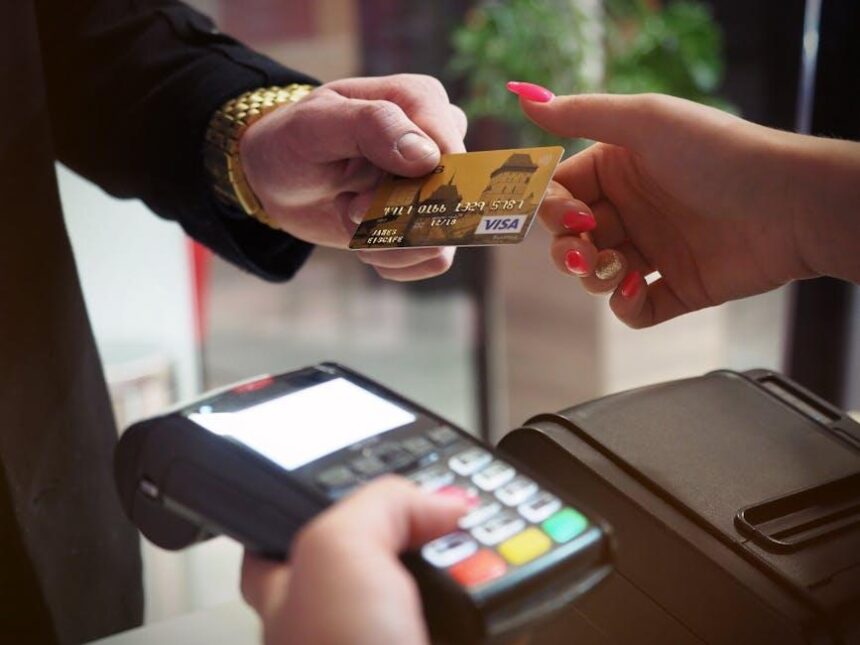In today’s digital age, where online shopping has become as commonplace as a stroll through the local mall, our wallets face a new breed of thieves. Credit card fraud is lurking behind every click, with cunning tactics designed to exploit unsuspecting consumers. However, taking proactive steps can fortify your defenses against these cybercriminals. In this article, we will explore smart strategies and essential tips to help you safeguard your financial information while enjoying the convenience of online transactions. By understanding the threats and implementing these protective measures, you can shop with confidence, ensuring that your wallet remains secure.
Understanding the Landscape of Online Credit Card Fraud
Online credit card fraud has evolved into a pervasive threat, impacting Americans across various sectors. Understanding its nuances is key to protecting your finances. This type of fraud typically involves unauthorized transactions using stolen credit card details, which can occur through various channels, from phishing scams to compromised payment systems.
Common Types of Online Credit Card Fraud:
- Phishing Scams: Fraudsters send emails that appear to come from legitimate companies, tricking users into providing personal information.
- Data Breaches: Large retailers or financial institutions may have their databases compromised, resulting in stolen credit card information.
- Card Not Present (CNP) Fraud: This occurs when online transactions don’t require physical cards, making it easier for scammers to use stolen numbers.
- Fake Websites: Cybercriminals create imitation sites that mirror legitimate businesses, intending to harvest users’ financial details.
To effectively combat these threats, it’s crucial to implement proactive measures:
- Use Strong Passwords: Combine letters, numbers, and symbols to create complex passwords, and change them regularly.
- Enable Two-Factor Authentication: This adds an additional layer of security, requiring a second form of verification, which can help protect your accounts even if passwords are compromised.
- Monitor Account Statements: Regularly reviewing your statements helps in quickly identifying unauthorized transactions.
- Utilize Virtual Card Numbers: Many banks, like Capital One, offer virtual card services for online purchases, which can help shield your actual credit card number.
| Fraud Prevention Tip | Description |
|---|---|
| Use Secure Connections | Always use a secure Wi-Fi connection, especially when making purchases. |
| Stay Informed | Be aware of the latest scams and trends in online fraud. |
| Contact Your Bank | If you suspect fraud, contact your bank or credit card issuer immediately for assistance. |
By staying informed and employing these strategies, you can significantly reduce your risk of falling victim to online credit card fraud. Never underestimate the importance of vigilance in protecting your financial information.

Essential Security Measures for Safe Online Shopping
When shopping online, it’s essential to prioritize your security to protect your financial information. Here are some crucial measures you can take to ensure a safer online shopping experience:
- Use Secure Websites: Always check for a URL that begins with https:// rather than http://. The “s” indicates that the site uses secure encryption to protect your data.
- Enable Two-Factor Authentication (2FA): Many banks and online retailers offer 2FA. This adds an extra layer of security by requiring a code sent to your phone or email in addition to your password.
- Regularly Monitor Your Accounts: Frequently log into your bank and credit card accounts to check for unauthorized transactions. Report any suspicious activity immediately.
- Use Unique Passwords: Create strong, unique passwords for each of your online accounts. Consider using a password manager to help keep track of them.
- Limit Personal Information Sharing: Only provide the necessary information required for purchases. Avoid sharing sensitive details, such as your Social Security number, unless absolutely necessary.
- Choose Credit Over Debit: Credit cards typically offer better fraud protection compared to debit cards. In cases of theft or fraud, you may have greater recourse with credit accounts.
- Be Wary of Public Wi-Fi: Avoid shopping on public Wi-Fi networks as they may not be secure. Use a VPN if you need to access sensitive information when you’re on the go.
- Check Seller Reviews: Before making a purchase, read reviews to learn about other customers’ experiences. Stick to well-known and trusted retailers.
Consider utilizing services like Ally Bank or American Express that provide excellent fraud monitoring and alerts. These features help you stay ahead of potential threats and keep your financial information safe.
| Security Measure | Benefit |
|---|---|
| Secure Websites (HTTPS) | Encryption protects data transmission. |
| Two-Factor Authentication | Prevents unauthorized access even if passwords are compromised. |
| Credit Cards | Offer consumer protection against fraud. |
| VPN Usage | Encrypts your internet connection on public networks. |
Implementing these security measures will help you shop online with greater confidence, safeguarding your financial information and ensuring a safer shopping experience.

Recognizing Red Flags and Warning Signs
Being alert to potential fraud is crucial in protecting your online financial information. Recognizing the early warning signs can make a significant difference in preventing credit card fraud. Here are some red flags to watch out for:
- Strange Transactions: Regularly check your bank statements for charges that seem unfamiliar. Any unauthorized transactions should be reported immediately to your bank.
- Poor Website Security: Always ensure that e-commerce sites use HTTPS. Look for a padlock icon in the address bar before entering sensitive information.
- Suspicious Emails: Be wary of emails that ask for sensitive information, especially if they create a sense of urgency. Scammers often use phishing techniques to collect personal data.
- Unusual Account Activity: Monitor your credit reports frequently for any accounts or inquiries you didn’t initiate. In the U.S., you’re entitled to one free credit report annually from each of the three major credit bureaus.
- Payment Denials: If your bank suddenly declines a transaction you’re sure is legitimate, it could indicate your card has been compromised. Contact your bank right away.
- Unrecognizable Merchant Names: If you notice a merchant name that doesn’t match your recent purchases, investigate further; fraudsters often use different names to process transactions.
To facilitate the quick identification of warnings, here’s a simple table summarizing these red flags:
| Red Flag | Description |
|---|---|
| Strange Transactions | Charges on your statement that you do not recognize. |
| Poor Website Security | Websites without HTTPS or padlock icons. |
| Suspicious Emails | Emails requesting sensitive information under pressure. |
| Unusual Account Activity | Unexpected accounts or inquiries on your credit report. |
| Payment Denials | Unexpected declines on your transactions. |
| Unrecognizable Merchant Names | Mismatch between recent purchases and merchant names. |
Staying informed and vigilant can greatly enhance your ability to spot these warning signs. Always trust your instincts and take proactive measures to secure your financial information.

Best Practices for Monitoring and Managing Your Accounts
Monitoring and managing your accounts effectively is crucial to preventing online credit card fraud. By adopting a proactive approach, you can safeguard your finances against potential threats. Here are some best practices to consider:
- Regularly Review Statements: Check your credit card and bank statements often. Look for any unfamiliar transactions and report them immediately.
- Set Up Alerts: Most banks and credit card providers offer transaction alerts via email or SMS. Enabling these alerts can help you stay informed about your account activity.
- Use Strong Passwords: Create unique, complex passwords for all your online accounts. Consider using a password manager to keep track of them safely.
- Enable Two-Factor Authentication: Whenever possible, activate two-factor authentication (2FA) for an extra layer of security. This requires a second form of identification beyond your password.
- Monitor Your Credit Report: Regularly check your credit report for any discrepancies. You can obtain a free report annually from each of the three major credit bureaus-Equifax, Experian, and TransUnion.
- Be Cautious with Public Wi-Fi: Avoid accessing sensitive financial information over public Wi-Fi. Use a VPN for added protection.
- Know Your Rights: Familiarize yourself with the Fair Credit Billing Act, which limits your liability for unauthorized charges to $50 if reported promptly.
| Action | Frequency | Benefits |
|---|---|---|
| Review Bank Statements | Monthly | Identify fraudulent charges quickly |
| Check Credit Report | Annually | Spot signs of identity theft early |
| Change Passwords | Every 3-6 months | Reduce risk of unauthorized access |
| Enable Alerts | Immediately | Receive real-time transaction updates |
By implementing these strategies, you can help protect your wallet from online credit card fraud, ensuring your financial information remains secure.

Concluding Remarks
As we navigate the digital marketplace, staying vigilant against online credit card fraud is essential for safeguarding our financial health. By implementing the smart tips outlined in this article, you can equip yourself with the tools needed to protect your wallet from potential threats. Remember, prevention is always easier than recovery. Stay informed, remain cautious, and enjoy the convenience of online shopping with peace of mind. Your financial security is worth the effort-take the necessary steps today to keep it intact for tomorrow.











